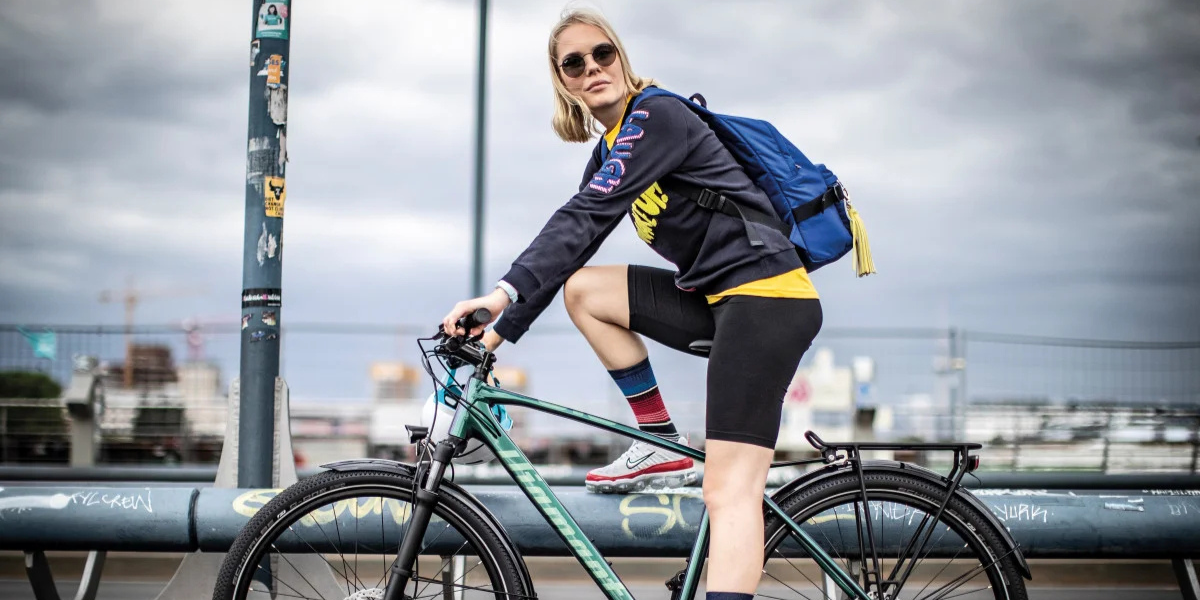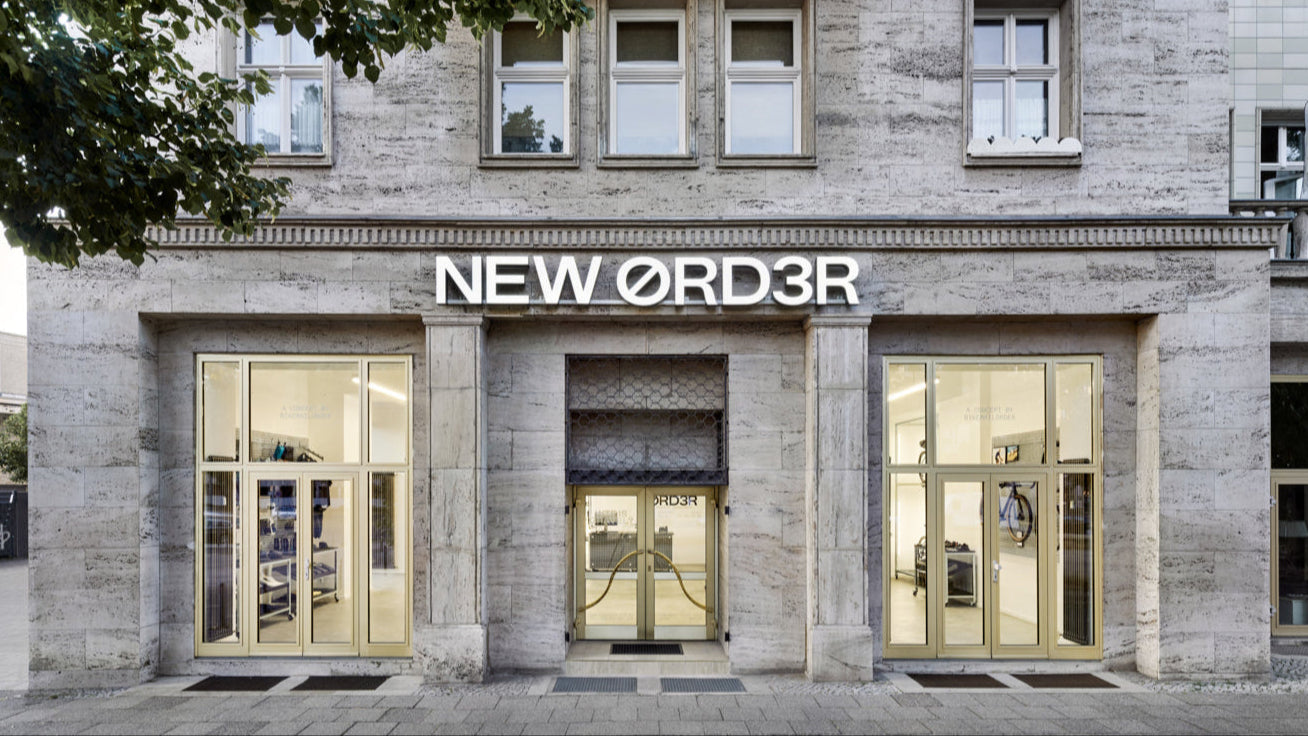What is a roadworthy bicycle? Do you remember? You actually learned it in elementary school when you got your bicycle license. But a roadworthy bicycle is not just for children! In fact, every bicycle that is on public roads should have "roadworthy equipment." But what exactly does your bike need for this?
Here you will learn what equipment your bicycle must have according to StVZO (Road Traffic Licensing Regulations), and we also have a few suggestions that are not necessarily mandatory, but still improve safety.
What does a roadworthy bicycle do for you?
Sports equipment, fun machine, means of transport – every bicycle lover sees something different in a bicycle. For the police and public order office, bicycles and e-bikes are primarily one thing: road users. And they have to comply with a whole range of regulations, otherwise, there will be trouble. If a bicycle meets these regulations, it is a "roadworthy bicycle" – and you are on the safe side, in two ways!
- You won't get in trouble. If you are caught in public road traffic without StVZO-compliant equipment, you will pay a fine.
- If you are involved in an accident, the question of the necessary safety equipment is often quickly raised. And it doesn't matter whether you caused the accident and/or are the injured party or not!
- "Prescribed equipment" always sounds very much like bureaucracy, but it is actually about your personal safety! A roadworthy bicycle simply has a few attachments that ensure your safety.
It makes your life as a cyclist safer if you make your bicycle roadworthy, that is, equip it with the prescribed safety equipment!
Does every bicycle have to be roadworthy?
The obligation for bells and the like applies not only to bicycles in the city, such as city bikes or trekking bikes! It doesn't matter whether you are racing over dirt paths on a mountain bike, setting off on a bikepacking adventure with a gravel bike, or doing road bike training on the highway. Whenever you ride on public roads, you need a roadworthy bicycle – and in Germany, that means almost all roads and paths! Even children's bicycles must also be equipped to be roadworthy from a certain size, and this also applies to e-bikes the same rules apply!
The StVZO applies to all bicycles that are ridden on public roads and paths.
But don't worry, not many components are prescribed, and they really serve solely for safety in road traffic.
What does a bicycle need to be roadworthy?
You don't have to spend a fortune to make your bicycle roadworthy according to StVO! Actually, there are only 3 parts (aside from the braking system) and they are quite easy to retrofit if your bicycle doesn't have them yet.
The bicycle bell
Every roadworthy bicycle needs a bicycle bell or bicycle bell. It should be clearly audible, "brightly sounding," says the law. Horns, sirens, or other "sound signal devices" might be amusing, but they are not allowed. Whether you have a large, colorful, noticeable bell or a slim, barely visible bell on your handlebar is up to you; the type and form are irrelevant for a roadworthy bicycle.

Step 1 to a roadworthy bicycle: Attach a bicycle bell!
Something completely different is a Trail-Bell! Here, a small bell is attached to a mountain bike or e-mountain bike that rings with every movement, meant to warn hikers and wildlife of oncoming bikers. Bells that ring constantly are prohibited in road traffic.
Two brakes are vital for a roadworthy bicycle!
The good news is – for most bicycles, you don't initially need to worry about this aspect of road safety. Every bicycle needs two brakes that "function independently of each other" and most bikes have them from the factory. Typically, these are a front brake and a rear brake. Whether you have two hand brakes or one hand brake and a coaster brake doesn't matter. You can choose the system you feel safer with. It is also up to you whether you ride with disc brakes or rim brakes. But beware! Bicycle brakes are wear parts and require regular maintenance. When they are worn out, they no longer brake safely!
There is also a special case: With a fixie, there are no brakes, but a fixed hub that must be pedaled backward to brake. According to StVZO, this is not allowed. A fixie is therefore not roadworthy!

Disc or rim brake, hand brake or coaster brake – the traffic-safe bicycle needs two brakes!
Non-slip, securely screwed pedals
For your bicycle to be StVZO-compliant and traffic-safe, the pedals must meet several requirements. They should be securely screwed and non-slip, providing enough grip for your feet even in wet or frosty conditions. The pedals must have yellow reflectors on the sides that shine forward and backward.
Bicycle lights
A traffic-safe bicycle needs good bicycle lights and various reflectors.
- You need a white headlight at the front.
- Additionally, a red rear light is required.
- A traffic-safe bicycle must have a white reflector at the front and a red rear reflector at the back, which may be combined with the lights.
- Until a few years ago, the lights had to be permanently mounted, but today battery clip-on lights are allowed, they just need to be securely mounted on the bicycle during operation.
- Spoke reflectors or cat's eyes must be mounted in the spokes. You can also stick reflector strips on the rims. Reflective spoke sleeves are also allowed.
If you don't have lighting on your bicycle and want to retrofit it, you should definitely make sure that the lights are approved according to StVZO when purchasing them.

Good bicycle lighting not only makes you visible at night, it also ensures that you don't miss anything in the dark – absolutely important on a traffic-safe bicycle!
Safe bicycle vs. traffic-safe bicycle
There are also some components that are not required by the StVZO but are still recommended as additional safety equipment by bicycle associations and magazines, namely:
- a chain guard: Many children's bicycles have them, and they can also be found on city bikes from time to time - protective covers that conceal the chain and the drive. If one of your shoelaces has ever wrapped around the crank or gotten caught in the chain, you know why. A chain guard ensures that clothing does not get tangled in the bike's drive. This is especially important on children's bikes, and those who like to wear skirts or dresses will always ride well with it.
- Mudguards: Mudguards are also not directly required but are always mentioned as sensible equipment. They are really important for all-weather bikers because splashing water in the face is not exactly conducive to good visibility.
- More and more bicycles and e-bikes are equipped with rearview mirrors. Aesthetically, mirrors on bicycles are rather questionable, but they definitely contribute to traffic safety!
- An annual safety check: A service is also generally not mandatory (unless your bike is leased and the lease contract requires regular maintenance). But a bicycle that is on the road should be checked by a professional at least once a year - just like a car by the TÜV. Wheels and brakes in particular are often neglected but must function reliably at all times. Tubes and tires become brittle or porous over time, they must be replaced in time. And a bicycle without functioning brakes is simply dangerous in traffic! During the bicycle service (also called an annual check or spring check), all important components of a bicycle are checked and maintained.
- A high-quality bike lock should also always be on board, it does not serve your safety, but that of your bike, but can avoid a lot of trouble!
- And then, of course, there is the bike helmet!

Mudguards and chain guards (here on the Urban Bike) are not necessarily mandatory, but definitely important for safety!
Do the same traffic rules apply to an e-bike?
If your e-bike is on the road according to the StVZO, it should be equipped for traffic safety just like any other bicycle. If you have a fast S-Pedelec when you ride, completely different rules apply, because it is not considered a bicycle, but a small motor vehicle. Before the first ride, you should find out exactly what regulations apply to an S-Pedelec.
The traffic-safe bicycle in elementary school
Do children also need a traffic-safe bicycle? That depends on the age of the children! Traffic-safe equipment is often omitted on small children's bicycles. Children do not yet have much physical strength; every gram that can be saved on the bicycle makes handling easier for them. As long as children are only on sidewalks, that is sufficient, but if your child is in the area of the StVZO, that is, on the street, the bicycle must meet the same requirements that apply to an adult bicycle. It must then have a bell, bicycle lights, reflectors, and so on. Many bicycles for children from elementary school age and also youth bicycles already have the necessary equipment mounted at the time of purchase.
Many elementary schools offer children the opportunity to obtain the bicycle license. You will see that your child will then immediately inspect their own bicycle (and all other bicycles in the neighborhood) and check the traffic safety! Your offspring might then force you to retrofit one or the other part!
Apart from the traffic safety according to StVZO, the safety of a child is particularly important! Small children's bicycles are particularly often overlooked, so it is advisable to improve the visibility of a small cyclist with some simple measures.
- A flag on a long pole ensures that the children are better seen between cars, garbage cans, and other objects.
- Clothing in bright colors and a colorful bicycle helmet are better perceived.
- If reflectors are integrated into the helmet and clothing, visibility is additionally increased.
- There should be no strings hanging down from the clothing and the children's backpack that could get caught on the bicycle.
- Also, daytime running lights or battery-powered bicycle lights that are turned on during the day make children's bicycles more visible.
- Still, you should always keep an eye on a small child when cars are nearby!
The most important safety feature of a children's bicycle is a good fit. Only a suitable, child-friendly equipped bicycle can be ridden and handled safely by a child.
Where does the StVZO apply?
In the area of the StVZO (the German Road Traffic Licensing Regulations), all bicycles must meet the rules mentioned above. It applies to all public traffic areas, roads, paths, and squares . Even on private property, the StVZO can apply if the private property (for example, a parking lot or a private road) is publicly accessible, the same applies to Wald and field paths. There are actually very few paths where the StVZO does not apply! No matter where you are traveling, with a traffic-safe equipped bicycle, you are always on the safe side! If you buy a bicycle in Germany, the big manufacturers usually make sure to comply with German traffic safety regulations. If you order a bike from a small manufacturer at the end of the world, you may have to retrofit it yourself!
Another tip: The StVZO naturally only applies in Germany. If you go traveling with your bicycle, the regulations of the vacation country apply! Therefore, you should inform yourself in advance whether a different safety equipment might be required there.

With a traffic-safe bicycle, you avoid a lot of trouble!
Do mountain bikes and racing bikes also need to be traffic-safe equipped?
When you buy a new city bike or trekking bike, you usually don't have to worry about it, as these bicycles are already equipped for the German market and meet the requirements of the road traffic regulations. Many gravel bikes also come with traffic-safe equipment. However, with performance-oriented sports bicycles like racing bikes and mountain bikes, traffic suitability is often lacking – is that allowed? After all, they are more like sports equipment, aren't they?
If you are riding your racing bike or mountain bike in the area where the StVZO applies (see above), the bicycle should be traffic-safe equipped, so you are on the safe side! Otherwise, fines may be imposed.
An MTB or racing bike naturally has brakes. Reflectors that are attached are still tolerated in the sports area. You may plug in the lights and attach them at dusk, but beware – even when you enter a tunnel, they should actually be in place! The bike bell and pedals with reflectors remain... we must leave this point to your conscience. If some of these components are missing from your sporty bicycle, you can easily retrofit them.
When is a bicycle traffic-safe – the checklist
This equipment must a traffic-safe bicycle have:
- high-pitched bell
- rear light (battery or dynamo) with separate or integrated self-illuminator
- front reflector (battery or dynamo) with integrated or separate self-illuminator
- firmly mounted, non-slip pedals with orange self-illuminators
- Reflectors in the spokes, spoke sleeves or adhesive reflectors
- two independent brakes
This is what a roadworthy bicycle needs:
Bell | Lighting | Brakes | Pedals
This equipment is also recommended:
- Chain guard
- Grippy tires
- Mudguards
- Bicycle lock
- Bicycle helmet
The bicycle parts additionally improve your safety:
Tires | Mudguards | Bicycle helmet | Mirror | Bicycle lock
Please note that we can only provide information without guarantee regarding the applicable legal situation!





